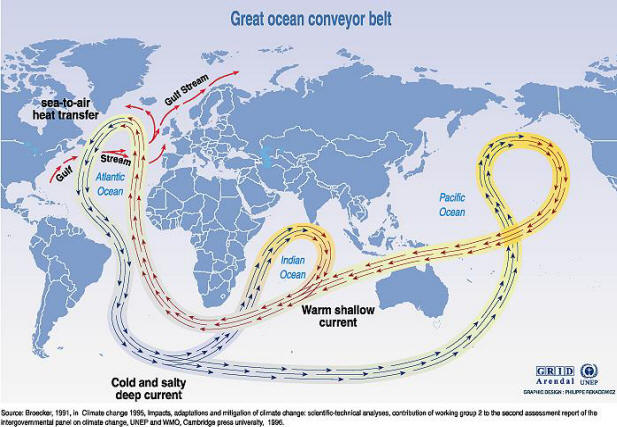
 |
There is substantial evidence to indicate that significant global warming will occur during the 21st century. Because changes have been gradual so far, and are projected to be similarly gradual in the future, the effects of global warming have the potential to be manageable for most nations. However, a 2004 research report commandeered by the U.S. Department of Defense suggests that there is a possibility that this gradual global warming could lead to a relatively abrupt slowing of the ocean’s thermohaline conveyor, which could lead to harsher winter weather conditions, sharply reduced soil moisture, and more intense winds in certain regions that currently provide a significant fraction of the world’s food production. With inadequate preparation, the result could be a significant drop in the human carrying capacity of the Earth’s environment. (reference)
Global warming causing harsher winter weather conditions? Hum, what can this all mean?
You want to share some ideas, or data with the visitors of the Corrosion Doctors Web siteplease send a note to our
The global conveyor belt thermohaline circulation is driven primarily by the formation and sinking of deep water from around 1500 m in the Norwegian Sea to the Antarctic bottom water. This circulation is thought to be responsible for the large flow of upper ocean water from the tropical Pacific to the Indian Ocean through the Indonesian Archipelogo. The two counteracting forcings operating in the North Atlantic control the conveyor belt circulation: (reference)

When the strength of the haline forcing increases due to excess precipitation, runoff, or ice melt the conveyor belt will weaken or even shut down. The variability in the strength of the conveyor belt will lead to climate change in Europe and it could also influence weather systems in other areas of the global ocean. The North Atlantic atmosphere-ocean-cryosphere system appears to have natural cycles of many timescales in switching the conveyor belt. Periodic movement of excessive ice from the Arctic into the Greenland Sea appears to be responsible for the interdecadal variability of the conveyor belt.